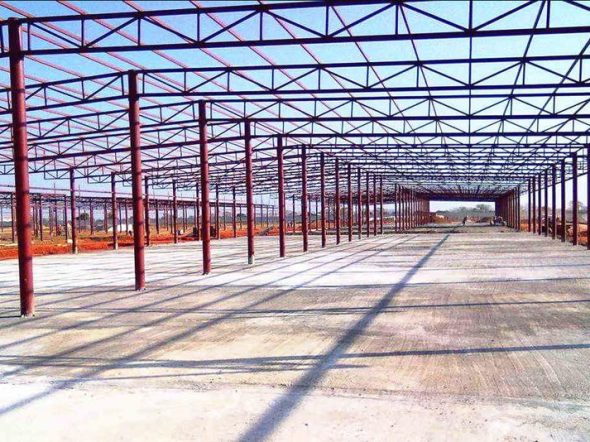As the construction industry progresses, steel trusses are gaining widespread recognition among builders. Steel trusses offer numerous benefits that make them a popular choice for construction projects. Trusses are triangulated systems that are well-known for being structurally efficient and lightweight, making them ideal for constructing steel structures of buildings and bridges.
Like many other areas, Ohio has also followed the trend of incorporating steel trusses in various construction projects across the state. If you're hiring a construction firm for your next project, consider the advantages of using steel trusses. They can greatly benefit your construction venture in the following ways.
Longevity and Durability
The use of steel trusses comes with an advantage in terms of their ability to endure harsh environmental elements, resist temperature fluctuations and support substantial weights. Due to the robustness and durability exhibited by steel, truss structures made from this material require minimal upkeep that leads to reduced life-cycle expenses over time. Compared to other construction materials, such as wood or concrete, steel trusses have a significantly longer lifespan.
Structural Efficiency
Steel trusses are not just any ordinary building component. They boast a remarkable design that allows them to bear an incredible amount of load while retaining their structural efficiency.
With its unique triangular formation, the steel trusses disperse weight evenly throughout the entire structure, enabling it to carry more than expected with fewer materials required for construction. This makes steel truss structures both economically and ecologically beneficial due to reduced material consumption and cost-effective investment in projects that require high-capacity loads-bearing capabilities.
Cost Savings
One of the key benefits of opting for steel trusses lies in its affordability and availability of both materials and payment options. As opposed to other building materials like concrete or wood, steel is relatively cheaper and easily procurable.
Moreover, the option of fabricating construction parts in advance permits builders to eliminate on-site assembly requirements and significantly reduce construction time. As a result, labor costs are reduced while minimizing waste production during the building phases. This makes it not only an economical alternative but also aligns with sustainable practices that have become increasingly popular among present-day builders.
Reduced Environmental Impact
The environmental impact of steel trusses can be considered relatively lower compared to other commonly used construction materials like concrete or wood. The production process of steel requires considerably less energy and thus exhibits a smaller carbon footprint than its counterparts. Additionally, the longevity of steel trusses leads to lesser waste and pollution created by dismantling and reconstructing structures over time, adding up to their sustainability factor in the long run.
Improved Load Capacity and Fire Resistance
Steel trusses also offer significantly improved load capacity and fire resistance. Compared to other materials like wood, steel trusses have a notably longer lifespan and can withstand extreme weather conditions with ease. Additionally, steel trusses have a unique structural design that allows them to disperse load evenly throughout the structure. This means that a steel truss structure can bear more weight than other materials without sacrificing stability or structural integrity.
Steel trusses offer a significant advantage in terms of fire resistance compared to their wooden counterparts, which are prone to damage and combustion. Due to this feature, steel trusses can be efficiently utilized for various civil-engineering projects like multi-story buildings, industrial sheds, bridges, and towers. The superior quality of these structures reduces the risk involved with fire hazards making them highly desirable for construction purposes.
Conclusion
The use of steel trusses presents numerous advantages that have made them a widely favored option for construction professionals globally. Their reliability, sturdiness, and eco-friendliness distinguish them as a sound building material.
Additionally, incorporating steel trusses can result in substantial financial savings, which is particularly advantageous for structures requiring extended spans. In the pursuit of sustainable practices, opting for steel trusses can aid in promoting responsible construction. However, utilizing wood as the singular material for constructing trusses comes with a multitude of benefits, including cost reduction and an improved ecological impact.
However, considering the unique advantages of steel trusses, such as greater load capacity and fire resistance, they are increasingly being preferred in Civil Engineering applications. As the world continues to focus on sustainable development and reducing environmental impact, steel trusses offer a practical solution for constructing resilient structures that meet long-term demands while reducing ecological impact.
